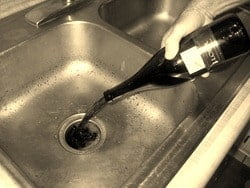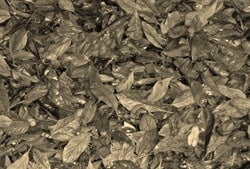 “Ermmmm excuse me, Garçon. This wine is bloody terrible!” – just doesn’t sit too well in most restaurants; therefore over the next couple of weeks I’m going to list some of the most common faults you may encounter on your travel through the wine-wonderland, as well as my suggested course of action should you stumble upon a “bad bottle”.
“Ermmmm excuse me, Garçon. This wine is bloody terrible!” – just doesn’t sit too well in most restaurants; therefore over the next couple of weeks I’m going to list some of the most common faults you may encounter on your travel through the wine-wonderland, as well as my suggested course of action should you stumble upon a “bad bottle”.
A lot of the time faults in wine go unnoticed, mainly because people just assume that’s just how the wine tastes, but unfortunately their perception of that brand is forever damaged. Faults in wine can be a major problem for winemakers, with most problems being attributed to the cork. Whilst a number of producers are working diligently to investigate the use of other closures, the humble cork isn’t always to blame!
It’s probably worth pointing out that I’d originally decided to write this all as one post, but it ended up being over 1400 words. I realize most people (in their average day) just don’t have that amount of time to devote to such a fairly dull topic, so I broke it up into easily digestible segments. You’re welcome!
And so let us begin with the first of the most common wine faults you may encounter…
 Trichloroanisole [Try-claw-row-ani-soul] (aka "TCA")
Trichloroanisole [Try-claw-row-ani-soul] (aka "TCA")
TCA is one of the most common faults in wine. Cork manufacturers use chlorine to sterilize wine corks, however if this process isn’t done correctly, it can lead to what we know as "cork tainted" or "corked" wines.
Different people have different sensitivities to TCA, but once you’ve been subjected to a few bottles that are affected by it, you can usually spot it just on the smell-alone. A number of cork manufacturers are now turning to peroxide bleaching in order to eliminate the problem of TCA.
How to tell if your wine is affected
The wine will smell significantly like moldy newspaper, wet leaves, or damp cloth, and the other aromas in the wine (i.e. the fruit) will be greatly reduced.
Your course of action
If you’re sure the wine is corked, and it isn’t just a “funky-Old-World-wine”, explain to your Server (politely) that you think there’s a problem. State that you would like to send the wine back and exchange it for another bottle of the same.There’s no need to change your selection, because you still like the wine, it was just the TCA…..right?
Click here for the rest of my —-> A Guide to Wine Faults posts.


Hvrose
Please understand that no cork manufacturer uses chlorine in any way. Chlorine contributes to TCA and thus it is never used in association with corks.
thanks.
Kris Chislett
This is partly where I got my research from:
http://www.beekmanwine.com/prevtopbz.htm
“Cork taint is offensive, but it is harmless from a health standpoint. It derives its name from cork closures. The prime cause is a reaction between a mold found in cork crevices and chlorine-containing cleaning compounds used to clean the corks. Its presence also can be traced to wineries where phenolic wood preservatives come in contact with chlorine compounds.”
Is that inaccurate?
Miguelpenn
Interesting blog…keep at it. Let me take a stab at this one. There are three important things, a trifecta as you will, that give way to the biological pathways of TCA. 1) the microbe. They live on the bark of the cork trees. They live in the preservative treated wood in posts and beams of the cellar. They live on the pallets that the barrels and glass are delivered on. There are over 20 species of molds, bacteria, and actinomycetes recognized as capable of converting phenols to TCA. 2) The phenol. This is a ring of carbons, the building block of tannin. Unfortunately, Portugese cork farmers sprayed a phenolic based herbicide on their forests for over 40 years. Since these trees are reharvested decade after decade, the bark contains residue of this herbicide. Its also found in the preservative of pallet wood. 3) Chlorine, or Bromine. Its out there. All though wineries and cork manufacturers no longer use chlorine to clean stuff, nobody in their right mind will do that anymore. Its in city water…
So there you go. You have the trifecta. The chlorine and the anisole (a two ringed phenol) are toxic to the microbe. To survive in this environment, the microbe puts them together to make TCA, and is therefore able to survive.
The cork industry is trying to overcome these issues by steam sterilization, high pressure treatments, careful sorting and analysis, and more. Personally, I like cork, it just feels right.
Cheers
Kris Chislett
Thanks for the insight! Very enlightening. Tons of info there I’ve never even seen in any of “the books”.